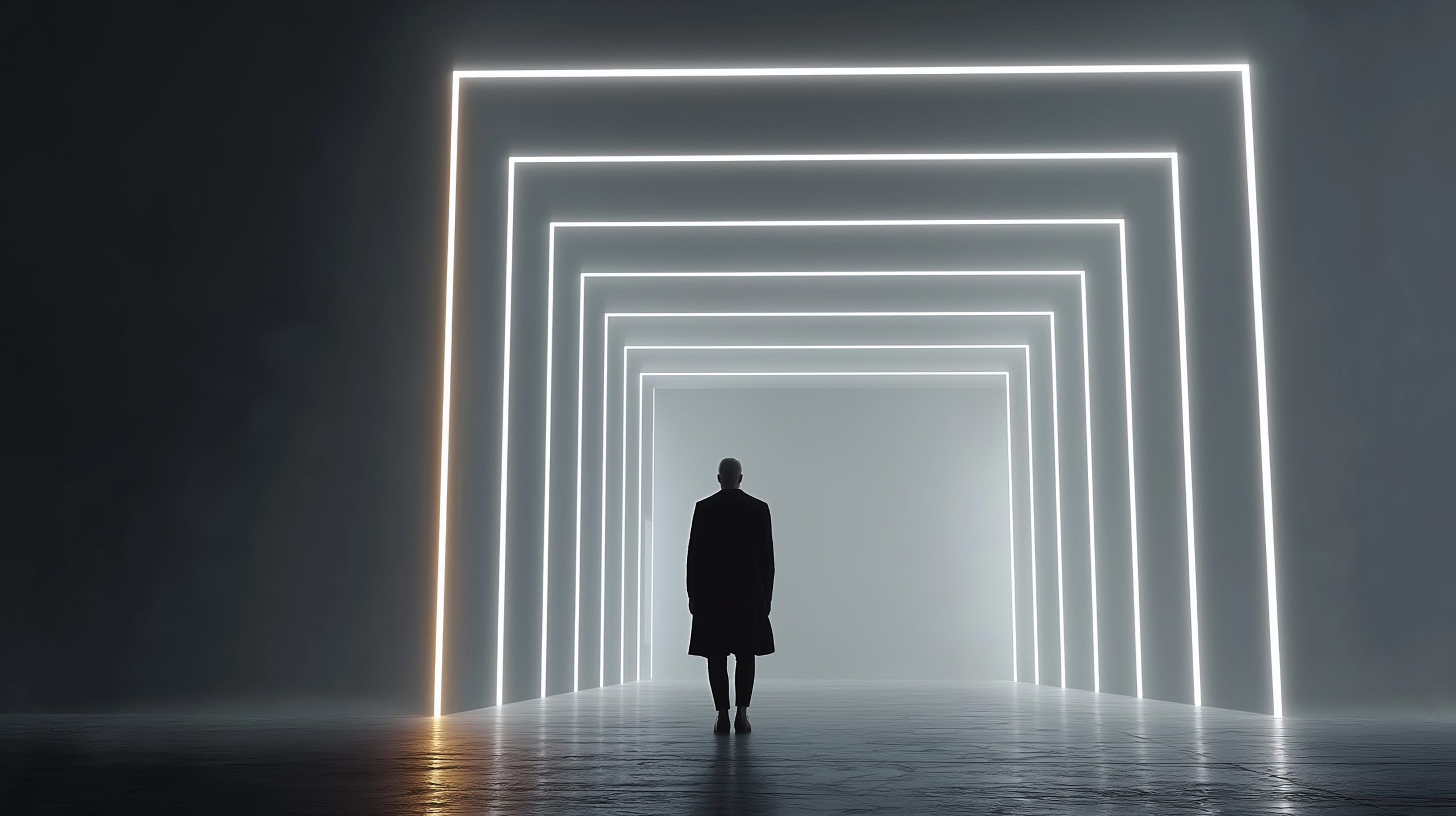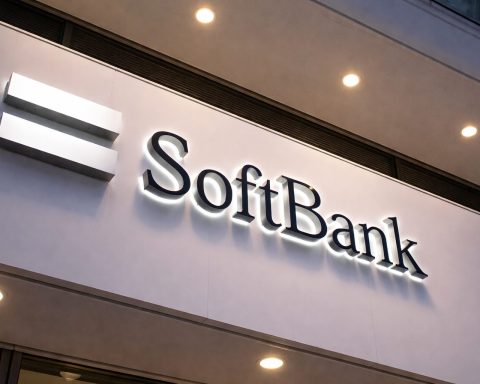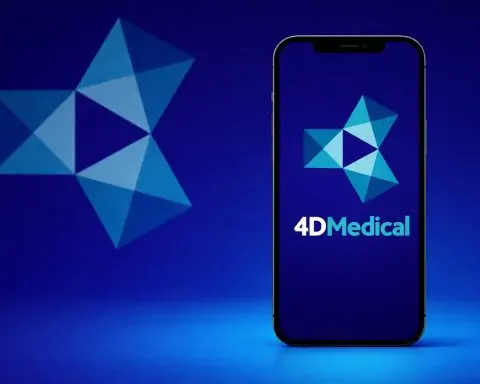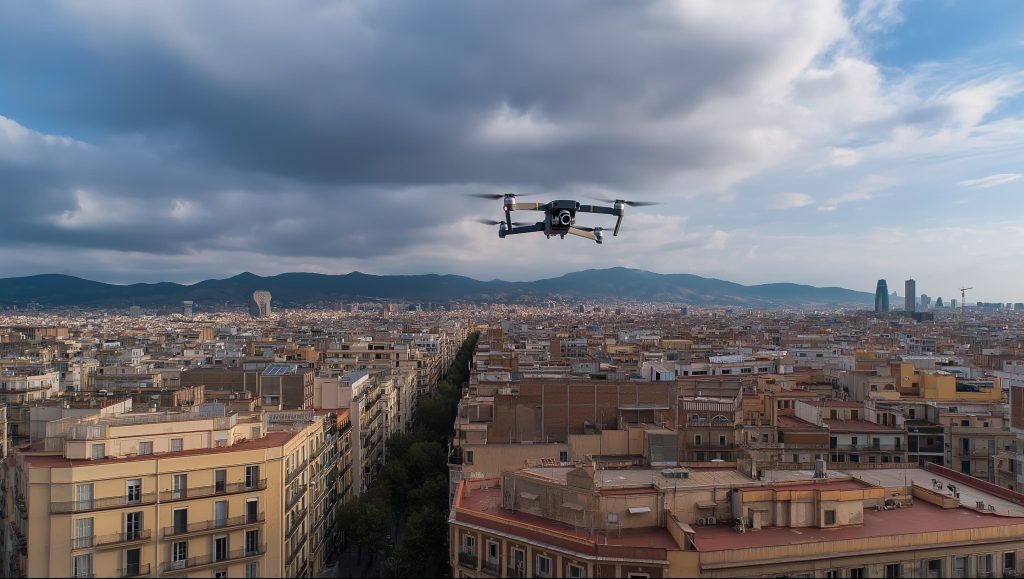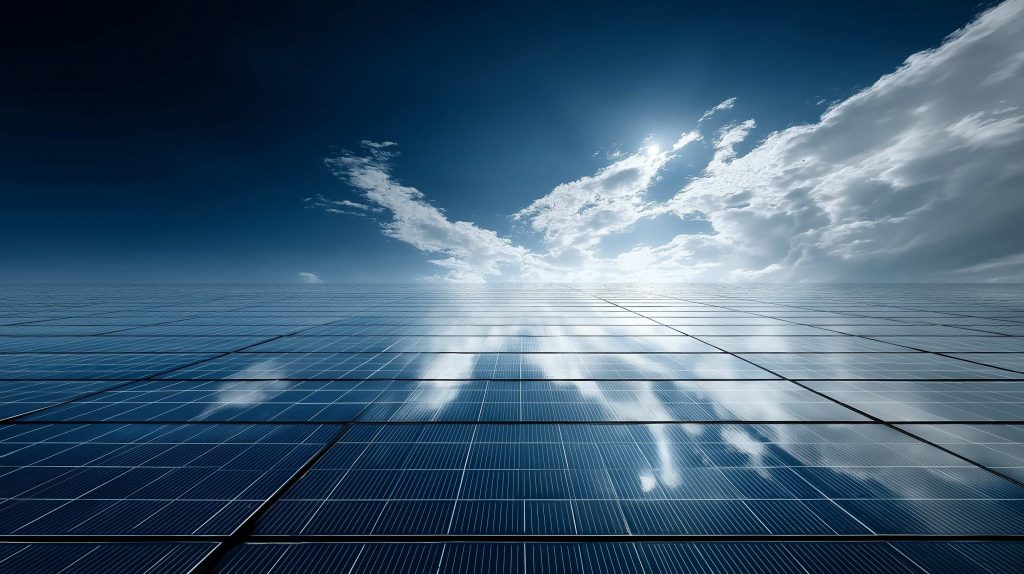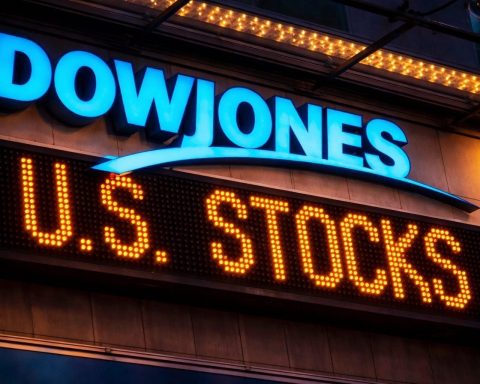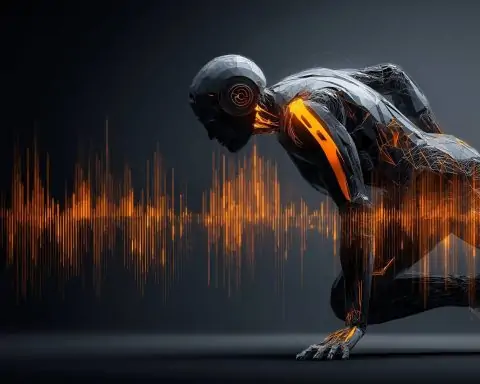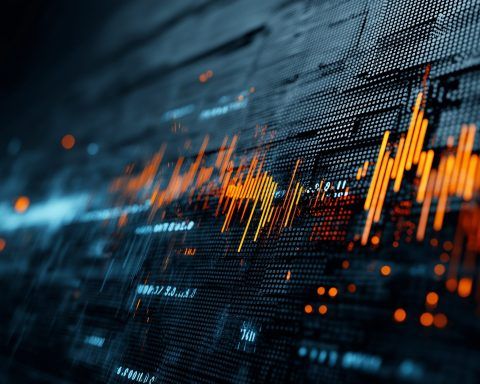- AI video generators use neural networks, including GANs and diffusion models, trained on large datasets to turn text, images, or clips into realistic videos.
- They storyboard from a text prompt, breaking a script into scenes and automatically assembling visuals and audio with automated edits and transitions.
- Text-to-video generation is available on platforms like Runway Gen-2 and Pika Labs, which can produce short clips from a written scene description with appropriate imagery and style.
- AI Avatars and Digital Presenters exist, with Synthesia offering 160+ avatars speaking in 120+ languages and lip-syncing to AI voices.
- Image and video input for stylization enables turning live-action clips into cartoons or extending videos using AI-generated frames, as shown by Runway Gen-1 and Pika Labs.
- Automated editing and effects can automatically select scenes, add transitions, subtitles, background music, and, as a Pika demo showed, change an actor’s clothing or add objects via text commands.
- Personalization at scale allows thousands of variants of a base video tailored to different audiences, including viewer-name personalization and localized messaging.
- Multilingual voiceovers and dubbing enable 29-language output with cloned voices, as demonstrated by Synthesia.
- Pricing and accessibility are SaaS-based with free trials or tiers; Runway offers a free tier and plans from $12/month up to $28/month (Pro) with enterprise around $76/month per user, Synthesia Starter about $30/month, Lumen5 Starter $29/month and Premium $79/month, while Pika Labs is free to try during beta.
- Real-world adoption and future potential include Runway’s AI-assisted VFX deal with Lionsgate, and forecasts of 4K+ resolution, real-time generation, and interactive personalized videos as major players like Google DeepMind and Adobe expand the field.
What Are AI Video Generators (and How Do They Work)?
AI video generators are software tools that use artificial intelligence to automatically create video content. They leverage machine learning, computer vision, and other AI techniques to turn inputs like text scripts, images, or clips into full videos with minimal human editing [1] [2]. In essence, an AI video generator acts as a virtual video producer: you feed it an idea or data, and it assembles scenes, visuals, and audio into a coherent video.
Behind the scenes, these generators analyze vast datasets to learn how to construct videos. Modern models use neural networks (including advanced techniques like GANs or diffusion models) to generate realistic frames and transitions. They might start by storyboarding from a text prompt – breaking a script into scenes – then synthesizing visuals and animations to match each scene [3] [4]. Many AI video tools also incorporate text-to-speech for voiceovers and auto-editing for cuts, transitions, and effects [5] [6]. The result is a polished video produced in a fraction of the time it would take a human editor [7].
Crucially, AI video generators improve over time. As one platform notes, “by training on large datasets, [the AI] learns patterns … enabling them to generate increasingly realistic and captivating videos” [8]. Early text-to-video models could only make short, low-res clips, but recent systems output HD or even 4K footage with sound and smooth motion [9] [10]. The technology is advancing rapidly: what was impossible a year ago is now achievable, and quality is improving with each model iteration.
Key Features and Capabilities of Modern AI Video Generators
Today’s AI video generators come with impressive features that make video creation faster and easier than ever:
- Text-to-Video Generation: Simply provide a script or prompt, and the AI will generate a video sequence to match. For example, platforms like Runway Gen-2 and Pika Labs can create short clips from a written scene description, complete with appropriate imagery and style [11] [12]. This is ideal for explainer videos, ads, or concept visualizations without any camera work.
- AI Avatars and Digital Presenters: Some tools (e.g. Synthesia) let you generate videos with lifelike human presenters from text. You type a narration, choose a virtual actor, and the avatar speaks your script on camera. Synthesia offers 160+ diverse AI avatars speaking in 120+ languages, allowing companies to produce training or marketing videos without hiring actors [13]. These avatars are highly realistic, lip-syncing perfectly to the AI-generated voice.
- Image and Video Input for Stylization: Beyond pure text input, many generators support image-to-video or video-to-video modes. For instance, you can feed an existing photo or rough video and have the AI animate it or transform its style. Runway’s Gen-1 model and Pika Labs both excel here – you can turn a live-action clip into a cartoon or extend a short video to be longer using AI-generated frames [14] [15].
- Automated Editing and Effects: AI tools can intelligently edit footage, selecting the best scenes, adding transitions, subtitles, background music, and even special effects automatically [16] [17]. For example, AI can remove silences, apply filters, or insert text overlays without manual work. Some advanced platforms even let you change elements within video – one demo from Pika showed changing an actor’s clothing and adding new objects via text commands [18].
- Personalization at Scale: A major capability of AI video generators is mass personalization. They can generate many variants of a base video tailored to different audiences. For instance, an e-commerce brand could have the AI create thousands of product video ads, each with messaging and visuals optimized for a specific customer demographic or even personalized with the viewer’s name – all done automatically [19] [20]. This level of targeted content creation was impractical to do manually.
- Multilingual Voiceovers and Dubbing: With integrated AI voice synthesis, tools can produce voiceovers in dozens of languages and even different voices. Notably, Synthesia allows an avatar to speak in 29 languages, including in the user’s own cloned voice [21]. This makes it easy to create multilingual training or marketing videos for global audiences without re-shooting.
- Ease of Use via Simple Interfaces: Accessibility is a key feature – many AI video generators offer drag-and-drop editors or simple web interfaces. Users don’t need video editing experience; the AI handles the heavy lifting. As one startup CEO put it, the goal is to “make it easier for anyone to create video on command” [22] [23]. From pre-built templates to one-click style options, the learning curve is low.
All these capabilities mean even a lone creator can produce content that once required a whole studio team. From generating a talking-head explainer in minutes to conjuring fantasy CGI scenes, AI video tools are pushing the boundaries of what individuals can create.
Leading AI Video Generator Platforms (2025)
Several companies have emerged as leaders in AI-driven video generation. Below is a comparison of some of the top platforms, their specialties, and pricing:
| Platform | Description & Key Features | Pricing & Access |
|---|---|---|
| Runway – Runway ML | Pioneers of Gen-2 text-to-video and Gen-1 video-to-video models. Allows users to generate short videos from scratch or apply AI stylization and effects to existing videos. Offers a suite of video editing tools (green screen, motion tracking) powered by AI. Partnered with Hollywood studios for VFX workflows. | Free tier (limited credits for a few seconds of video). Paid plans from $12/month (Standard) up to $28/month (Pro) for more usage [24]. Enterprise plans for unlimited usage (~$76/month per user) [25]. |
| Synthesia – Synthesia.io | Leading text-to-video platform using AI avatars. Users create videos by choosing a virtual presenter and inputting a script; the avatar speaks the script in a chosen language. Supports 140+ languages and accents with 160+ pre-made avatars (or custom ones) [26]. Widely used for corporate training, how-to videos, and marketing messages without filming. | Free trial available (and a new free tier with watermarked videos). Starter plans around $30/month (for ~10 video minutes) [27], scaling up for higher volume. Enterprise plans allow custom avatars and more minutes (pricing custom). |
| Pika Labs – Pika | An innovative text-to-video generator that creates short 4-6 second video clips from prompts. Known for creative styles – you can generate videos in “3D animation,” “anime,” “cinematic” or other modes by describing the scene [28] [29]. Pika also offers in-situ editing: you can extend video length, change aspect ratios, or modify elements in a clip via text (e.g. “make the car red” will change an object’s color). Very popular among social media creators for quick visuals. | Originally launched via a Discord bot, now in web beta. Early access is open to sign-ups [30]. Currently free to try during beta; pricing not yet public (expected to introduce subscription or credit model as the platform matures). |
| Lumen5 – Lumen5 | An online video maker that uses AI assistance to turn blogs, articles or scripts into animated marketing videos. Focuses on turning text content into slideshow-style videos with stock photos, video clips, and automated scene transitions. Great for social media content, listicles, and corporate slideshow videos. Less generative “from scratch” and more about smart assembly of existing media. | Offers a Free Forever plan with Lumen5 branding. Paid plans start at about $29/month (Starter) for 720p videos, up to $79/month (Premium) and business tiers for higher resolutions and team collaboration [31]. |
Other Notables: Colossyan and HeyGen provide avatar-based video generation similar to Synthesia, D-ID specializes in AI-generated talking head videos from a single photo, and big tech companies (Google, Meta, NVIDIA) have demoed their own generative video research tools (like Google’s Imagen Video and Meta’s Make-A-Video), though these are not yet publicly available products [32].
Each platform has its unique strengths – from photorealistic CGI generation to convenient templates – but all are driving the trend of making video production faster and more accessible.
Real-World Use Cases Across Industries
AI video generators have real practical applications in a range of industries, fundamentally changing how video content is produced in each:
Marketing and Advertising
In marketing, AI video generators are a game-changer. Brands can produce promotional videos and ads at scale, much faster than before. These tools make it easy to generate engaging product videos, social media clips, or personalized advertisements without a big production budget. According to one report, businesses can now “rapidly produce engaging content that captivates their target audience,” delivering personalized and targeted videos that maximize reach and conversions [33].
For example, a marketer could simply input a product description and target audience, and the AI will output a polished promo video with relevant imagery, on-brand colors, and even tailored text overlays for that audience. AI systems can pull product images, add customer testimonial text, and even integrate real-time data (like pricing or stock levels) into an ad video automatically [34]. This allows for hyper-tailored marketing – imagine auto-generating 50 variant ads, each targeting a different customer segment or locale, all in the time it once took to make one video. Companies like Amazon and Facebook have hinted at this future: instead of pre-shooting an ad, an advertiser might soon just provide their product info and let AI generate dozens of optimized video ads to run in different markets [35] [36].
Entertainment & Media Production
The entertainment industry has quickly embraced AI video generation to enhance filmmaking and content creation. Filmmakers and video creators can use AI tools to automatically edit raw footage, suggest cuts, add effects, or even generate entirely new scenes with CGI. This automation of tedious post-production tasks frees up creators to focus on storytelling. As one article noted, AI video generators can “automatically edit raw footage, apply visual effects, and even generate entirely new scenes,” saving filmmakers hours of manual work [37] [38].
For instance, an indie director on a tight budget could film actors on a green screen and then use an AI generator to create exotic digital backgrounds or crowd scenes in post-production – no expensive VFX team needed. AI can also help with pre-visualization: directors can type a description of a storyboard, and get an AI-generated animatic of the scene to help plan the real shoot. Major studios are experimenting too. Runway ML’s tools have been used in movie productions (the company even struck a deal with Lionsgate for AI-assisted VFX), and the CEO of Runway, Cristóbal Valenzuela, argues that Hollywood should see AI as a collaborator, not a threat. He calls this moment an industry inflection point – even stating that embracing AI video generation is a “make-or-break moment” for every entertainment company [39].
There are also new creative possibilities: music videos made entirely by AI visuals, or video game cutscenes generated on the fly. However, the entertainment use case does raise debates around originality and CGI vs. human artistry – more on the ethical considerations later.
Education and E-Learning
Education has been transformed by AI video generators, which enable instructors to create engaging learning content with ease. Rather than relying solely on textbooks or slide decks, teachers and e-learning developers can produce animated lessons, explainer videos, or training modules simply by typing what the lesson is about. These AI-made videos can include visuals like charts or animations to illustrate concepts, without the teacher needing design skills. In fact, educators now “create interactive and engaging instructional videos that cater to different learning styles,” making learning more immersive and effective [40].
Consider a science teacher explaining planetary motion: instead of a static diagram, they can have an AI quickly generate a short video showing planets orbiting the sun from various angles, with a voiceover explanation. AI tools can automatically add subtitles, graphics, and even quiz questions inside the video. For corporate training, which is basically education for employees, the same applies – companies use AI to generate training videos, onboarding tutorials, and how-tos (often with friendly avatar presenters) without hiring a video team. This is a huge time-saver when training materials need frequent updating or localization into many languages.
One clear benefit is the ability to summarize and condense information. AI video generators can take a long lecture or manual and produce a concise video highlight reel covering the key points [41]. Both students and professionals appreciate training content that is succinct and visual. With AI, an instructional designer can update a video in minutes by tweaking the script and letting the AI regenerate the visuals, rather than re-filming an instructor.
Corporate Training and Internal Communications
Businesses are heavy adopters of AI video generation for internal use. From HR departments creating company policy explainers to CEOs sending out quarterly update videos, these tools make corporate communications more engaging. Most enterprises historically defaulted to long emails or slide decks for internal comms, even though people prefer video [42]. AI generators now bridge that gap by making video production as easy as writing a document. For example, a manager can input the text of an announcement, and have an AI avatar of their choice present it on video, complete with the company logo and perhaps some stock footage B-roll.
Synthesia’s CEO Victor Riparbelli highlights that this approach saves huge amounts of time and money. “The process used to be that you’d go into a studio… that cost around $1,000 per avatar. Now, you can do it more or less for free,” he said, noting the dramatic cost reduction AI brings to corporate video production [43]. The savings on hiring cameras, studios, or actors – plus the speed (minutes to get a video) – means organizations can communicate with video whenever needed. Companies use AI videos for things like employee onboarding (one video per role, easily updated each time policies change), compliance training in multiple languages, or personalized sales training where each rep gets a video coaching module tailored to them.
Another advantage is consistency – an AI avatar will present information exactly the same way each time, ensuring everyone gets the same message. And with translation features, a single video script can be instantly rendered into dozens of languages for a global workforce. This ability to scale video content globally and quickly has made AI video generators an attractive tool for large enterprises (indeed, giants like SAP and Siemens are reported to leverage Synthesia’s platform [44]).
Pricing Models and Accessibility
AI video generators typically operate on a SaaS model with a mix of subscription plans and usage-based pricing. The good news is that many offer free trials or even free tiers, making them accessible to individuals and small businesses:
- Free Tiers: Several platforms have a free plan or trial credits. For example, Runway’s free tier provides a limited number of generation credits (enough to produce a few seconds of video or try basic features). Lumen5’s free plan allows creating videos with a watermark. These options let users experiment at no cost, though with feature or output limitations.
- Subscription Plans: Most tools offer monthly or annual subscriptions at different levels. Plans are often tiered by the number of video minutes you can generate per month, output resolution, and advanced features. Synthesia’s starter plan (~$30/month) includes 10 minutes of video generation and access to standard avatars [45]. Higher plans offer more minutes and extras like custom avatars. Runway’s plans range from $12/month for individuals up to ~$95/month for unlimited pro access [46] [47]. Lumen5 similarly has tiers like Starter ($29/mo for basic features) and Premium ($79/mo for higher-end use) [48].
- Credit or Usage-Based: Some services use credits or pay-as-you-go pricing. For instance, a platform might charge X credits per second of generated video. This can be on top of a subscription or instead of one. Runway in particular uses a credit system for generation (e.g. one report noted ~$0.05 per 4-second AI video clip as a rough cost) – heavy users can purchase extra credits or go on higher tiers if they need lots of output [49].
- Enterprise Licensing: For large-scale corporate use, enterprise licenses with custom pricing are common. These often include unlimited or very high volume usage, dedicated support, and on-premise or private cloud deployment if needed for security. Synthesia, for example, has enterprise plans that can include creating a custom AI avatar of a real person (e.g. a company’s CEO) which costs extra and involves one-time production of that avatar in a studio [50]. Enterprises might pay tens of thousands per year for wide deployment across a company [51].
Overall, the trend is that AI video creation is becoming more affordable and within reach for everyone from individual content creators to big companies. The competition among many tools is driving prices down and also improving free offerings. As one 2024 industry recap noted, “AI video tools are more affordable and accessible than ever before, enabling anyone – from creators to small businesses and educators – to produce high-quality videos without needing professional equipment or expertise.” [52] This democratization of video production means cost is less of a barrier than it’s ever been.
On the accessibility front, these platforms are generally cloud-based and run in a web browser. There’s no heavy hardware or GPU required on the user’s side – all the AI crunching happens on servers. Many have intuitive interfaces with templates, making the video creation process as simple as filling a form or using a slide-based editor. Even those without any editing background can jump in and start creating content, which is a key part of their appeal.
Pros and Cons of Using AI Video Tools
Like any disruptive technology, AI-generated video comes with a set of benefits and drawbacks. It’s important to weigh these pros and cons when considering adopting such tools:
Pros and Advantages
- Dramatic Time Savings and Speed: AI video generators can produce in minutes what might take human editors days. They automate time-consuming tasks (cutting clips, adding subtitles, rendering effects). Tasks that “required hours or even days of work from a human editor…can now be accomplished in just minutes by an AI” [53]. This speed to output allows content teams to keep up with the fast pace of social media and marketing demands.
- Lower Production Costs: By reducing or eliminating the need for filming equipment, studios, actors, and specialized editors, AI tools cut costs significantly. Users only pay a subscription or per-video fee that is typically far less than hiring a video crew. As Synthesia’s CEO put it, what used to cost $1,000 in studio fees “now you can do…for free” (once you’ve subscribed to the AI service) [54]. Small businesses and creators with limited budgets can now afford quality video content.
- Scalability & Volume: With automation, producing 100 videos is nearly as easy as producing one – you’re mostly just varying the input prompts. This is perfect for scaling marketing campaigns or large training libraries. AI doesn’t get tired: it can churn out content 24/7. Companies can exponentially increase their video output (for example, generating personalized videos for each customer) which was not practical before.
- Personalization and Localization: AI video generators excel at tailoring content. They can personalize videos with viewer-specific details (name, preferences) on the fly, boosting engagement [55] [56]. They also can quickly translate or re-dub videos to different languages via AI voices, making global localization much easier. This helps organizations reach wider audiences effectively.
- Creative Experimentation: For content creators, these tools open up new creative avenues. One can prototype visual ideas by describing them, allowing rapid iteration of concepts. An artist can generate surreal or abstract video art that would be hard to film in reality. AI can also assist in creativity by suggesting visuals or edits one might not have thought of. It’s like having an ever-ready “idea generator” on hand.
- No Video Skills Required: Perhaps one of the biggest pros is that anyone can make videos now, not just video professionals. The AI handles the complex technical work (animation, rendering, syncing audio). This empowers storytellers who might not have production skills – teachers, researchers, everyday people – to communicate via video. The learning curve is low, often just involving writing a script or selecting styles.
Cons and Limitations
- Quality and Realism Issues: Despite rapid progress, AI-generated videos can sometimes look artificial or glitchy. Strange artifacts, lower resolution on certain details, or the “uncanny valley” effect with human avatars can undermine the message [57]. For mission-critical productions, the output may still require human post-editing to fix issues. Consistency is a challenge – the AI might change a character’s hair or the color of an object between frames unless carefully guided [58] [59]. So, while good, the technology isn’t perfect yet and may produce surreal bloopers.
- Limited Creativity & Originality: AI works by learning patterns from existing data, which means it may struggle to be truly original. It often produces fairly formulaic results (e.g., corporate AI videos have a certain “templated” feel). As one analysis noted, these tools might not “fully capture the depth of human creativity, making it challenging to produce truly unique or emotionally resonant content.” [60] A script or concept that requires subtle emotional storytelling or a very distinct directorial style could fall flat when generated by AI. There is also a risk that everyone using the same tool ends up with videos that feel somewhat homogenous.
- Ethical and Misinformation Risks: Perhaps the biggest concern is misuse of AI video. Bad actors can create deepfakes – videos that convincingly fabricate someone’s likeness or speech – which can spread misinformation or defame individuals. For example, AI could generate a fake video of a celebrity or political figure saying something they never did, with harmful consequences. “AI-generated videos can be misused to create misleading content,” experts warn, which could “lead to misinformation and harm reputations” [61]. This has raised alarms about trust in media (viewers may start doubting real videos too) and has prompted calls for regulation and detection tools.
- Loss of Human Touch: Over-reliance on AI might mean fewer human creative jobs and a certain loss of the human “spark” in videos. If everything is automated, you risk videos feeling soulless or overly polished. There’s also the issue of less human oversight – important editorial choices (like how to frame a story, or sensitivity to cultural nuances) might be made by algorithms that don’t fully grasp context. Some critics argue that while AI can generate content, it doesn’t truly understand the message, so it might miss the mark on deeper meaning or tone. In short, you may lose the personal touch and storytelling nuance that a human creator brings [62].
- Legal and Copyright Uncertainties: The law is still catching up to AI-generated media. Currently in the U.S., a video created entirely by AI cannot be copyrighted because there is no human author, meaning creators might not have typical IP protection over purely AI-made content [63] [64]. This unsettled ownership can be a con for businesses wanting to protect their marketing assets. Furthermore, many generative video models are trained on existing videos and images, some of which are copyrighted material. This raises questions: if an AI-generated video inadvertently reproduces elements of its training data, could that infringe copyright? There are ongoing lawsuits (one class-action suit involves Runway and others for scraping content) and it’s a legal gray area [65] [66]. Until resolved, companies face uncertainty on the IP side when using these tools.
- Bias and Representation Issues: AI models can inherit biases from their training data. If most footage the AI learned from portrays certain stereotypes, the generated videos might unintentionally reinforce those. For example, an AI avatar generator might initially have more male than female avatars or lack diversity in ethnicity, though companies are working to fix this. Also, AI might not accurately represent certain cultures or might misinterpret non-standard inputs, which could be problematic in global applications.
In sum, AI video generators bring incredible efficiency and capability, but users should be mindful of their limitations. A balanced approach often works best: use AI for what it’s good at (speed, scalability), and involve humans for what they excel at (creative direction, quality control, ethical judgment).
Ethical, Legal, and Copyright Considerations
The rise of AI-generated video has spurred important discussions about ethics and legality. Because this technology can blur the line between real and fake content, stakeholders are scrambling to set guidelines and policies.
Deepfakes and Misinformation: Perhaps the most visible ethical issue is the creation of deepfakes – hyper-realistic fake videos of people. These can be used maliciously to spread false information or impersonate someone (for example, a deepfake of a politician declaring something they never said). Such uses can cause harm to reputations and even threaten public trust and safety. Lawmakers are taking notice: as of 2024, 29 U.S. states had enacted or proposed laws against certain malicious deepfakes (particularly in political or pornographic contexts) [67]. The EU’s forthcoming AI Act will also require clear labeling of AI-generated media in some cases [68]. The ethical consensus is that transparency is key – viewers should be informed when a video is AI-generated, especially if a real person’s likeness is used. AI companies like Synthesia have strict policies forbidding users from generating someone’s avatar without consent; “Non-consensual content or avatars in any way… is prohibited,” emphasizes Synthesia’s usage guidelines as noted by its CEO [69].
Consent and Control: Relatedly, using AI avatars of real people raises consent questions. Synthesia and similar services only allow creating a custom avatar of someone if that person has given explicit permission (often by recording footage in a controlled studio). This is to prevent the tech from being used to impersonate individuals without their knowledge. Ethically, individuals should have control over their own likeness and voice. We’re likely to see new legal frameworks that treat a person’s digital avatar or deepfake as an extension of their identity, with protections against unauthorized use.
Copyright and Ownership: As mentioned in the cons, there’s an ongoing debate about who (if anyone) owns AI-generated content. In the U.S., the Copyright Office has taken the stance that works created entirely by AI have no human author and thus can’t be copyrighted [70] [71]. This means if you generate a video 100% with AI, you might not be able to stop others from copying or distributing it, since it’s not protected. However, if there’s significant human creativity involved – for example, you wrote a very detailed script and did substantial editing of the AI’s output – there is an argument that the human-contributed portions can be protected [72]. This area is evolving, and different countries have different rules (for instance, some jurisdictions are exploring new categories of AI-related IP). On the training data side, multiple lawsuits are underway claiming that AI companies infringed copyright by training on copyrighted images and videos without permission [73]. The outcomes of these cases could impact AI video generators significantly – if courts rule that unlicensed training data is illegal, future AI models might have to be trained only on licensed or public domain content, or companies might owe royalties to content creators whose works were used to teach the AI.
Authenticity and Watermarking: To help combat misinformation and establish authenticity, there’s a push for AI-generated videos to carry some form of watermark or metadata indicating their origin. Researchers are working on subtle digital watermarks embedded in AI content that are imperceptible to humans but detectable by algorithms. This could allow social platforms or news outlets to automatically flag AI-generated media. Some AI video services already voluntarily watermark their free outputs (e.g., free Synthesia videos have a logo) to make it clear they’re synthetic. Governments are also interested – for example, California passed a law against election deepfakes and China implemented rules requiring AI-generated media to be clearly labeled as such. Global standards for AI content disclosure will likely emerge in the next few years.
Bias and Fairness: Ethically, creators of AI video tools need to ensure their systems are fair and unbiased. If an AI is used in hiring videos or educational content, for example, it must not discriminate or produce stereotypical representations. Companies are starting to do AI audits to check for bias in how, say, an avatar presents people of different backgrounds or how an AI might choose imagery for certain topics.
Impact on Jobs and Society: A broader ethical question is the impact on creative jobs. Video editors, actors, voice-over artists, and animators could be affected if AI automates parts of their work. During the Hollywood writers’ and actors’ strikes in 2023, one concern raised was the use of AI to generate scripts or digital extras, potentially undercutting creative labor [74]. The counterargument from AI advocates is that these tools are assistants, not replacements – they handle grunt work, allowing humans to focus on higher-level creativity. Still, managing the transition is important. Some in the industry call for guidelines about how AI can be used in productions (for example, actors negotiated protections so studios can’t use AI replicas of their likeness without negotiation). The ethical use of AI, in this sense, means augmenting human creativity, not exploiting it or replacing it without consent.
In summary, the ethical and legal landscape for AI video is actively developing. Using these tools responsibly involves being transparent, respecting intellectual property and personal likeness rights, and putting proper safeguards in place. It’s a classic race between fast-moving technology and the slower-moving regulatory responses – and everyone from tech companies to governments is working to “protect against potential harm or unforeseen consequences” even as we embrace the exciting possibilities [75].
Future Outlook: What’s Next for AI Video Generation?
The future of AI video generators is incredibly exciting – and a bit daunting. As we look ahead, experts predict that the technology’s capabilities will grow exponentially, potentially reshaping media and communication in profound ways.
On the technical front, expect videos generated by AI to become indistinguishable from live-action footage in quality. Today’s cutting-edge models already produce HD videos; in the next couple of years, we’re likely to see 4K or higher resolution, perfect frame consistency, and longer durations. Runway’s CEO Cristóbal Valenzuela even suggests that “the quality of videos will soon match that of photos. At that point, anyone will be able to create movies without the need for a camera, lights, or actors – they will simply interact with AIs.” [76] This hints at a future where a solo creator could literally “film” an entire movie by just typing how each scene should look, and the AI renders it photorealistically. It sounds like science fiction, but the pace of improvement in AI image and video generation makes it plausible.
We will also see more real-time generation and interactivity. Instead of pre-rendering a video, future systems might generate content on the fly. Imagine interactive videos or games where the viewer can ask an AI character questions and get dynamically generated video responses, or movies that personalize themselves to each viewer. Victor Riparbelli of Synthesia has noted that “in the not-so-distant future, you can probably have a conversation with an avatar… you can have personalized videos” that adapt to each person [77]. This convergence of AI video with real-time AI conversation (like chatbot tech) could lead to interactive educational videos or choose-your-own-adventure style entertainment where the story unfolds based on audience input.
Multimodal integration is another trend – AI video generators will blend with VR/AR and other media. For example, AI-generated 3D video content could be used in virtual reality environments, making immersive training simulations or VR films much easier to produce [78]. Augmented reality might benefit too: an AI could generate live captions or translations as a person in AR glasses watches a video, or even swap and augment real-world scenes in real time through a camera feed.
We’ll also see big players like Google, Meta, and Adobe enter the field more strongly. In 2024, Google DeepMind and others announced experimental generative video models (e.g. Google’s Veo and Tencent’s Hunyuan were mentioned in tech circles [79]). While smaller startups have led the charge so far, these tech giants have massive compute resources and data – if they release public tools, AI video might become as ubiquitous as AI image generation is now. Adobe, for one, is weaving generative AI into its Creative Cloud suite; we might get an “AI Video” button in Premiere Pro that auto-edits your film or creates filler b-roll on demand [80]. Increased competition generally spurs innovation, so we can expect faster, more capable, and more user-friendly tools within the next year or two.
Use cases will broaden and new ones will emerge. Marketing and training are already being transformed, but consider other arenas: journalism (AI-generated news recaps or reenactments), personalized entertainment (AI-generated sitcom episodes custom to your humor style), or even AI in film restoration (using AI to generate missing frames or colorize old footage). Social media content might become overwhelmingly AI-generated, raising questions about authenticity but also enabling everyone to be a creator. One likely scenario is the rise of “virtual influencers” and AI-generated characters that have their own video channels with no human actor at all.
However, the future also brings contentious debates and challenges. As one 2025 outlook put it, the trajectory is “promising – but also contentious and unknown”, with everyone from brands to governments “scrambling to understand the technology… while also trying to protect against potential harm” [81]. We will see regulatory frameworks solidify – perhaps requiring watermarking of AI videos, or establishing rights for individuals regarding their digital likeness. There will likely be industry standards on ethical usage (similar to how we eventually got advertising standards or photo editing disclosure norms).
The creative community will also continue to adapt. Optimists like filmmaker Joe Russo predict AI could enable a filmmaker to generate a movie on a laptop in the future, radically lowering the barrier to entry for storytelling. Pessimists worry about a flood of mediocre auto-generated content. The outcome may be a bit of both – a flood of content, yes, but also brilliant new creators empowered by AI who would never have had a chance in the old system. Michael Mignano, a tech investor, commented that “just as other new AI products have done for text and images, professional-quality video creation will also become democratized by generative AI”, and he believes companies like Pika will lead that transformation [82]. The word “democratized” comes up often – meaning the power of video creation will be in everyone’s hands, not just big studios.
In conclusion, AI video generators are on a fast track to revolutionize how we create and consume video. We’re likely to see incredible advancements in realism and capability in the next couple of years, along with a clearer framework for addressing the ethical and legal issues. For businesses, educators, and creators, it’s worth staying tuned in: those who harness these tools early can gain a competitive edge with faster, cheaper, and more personalized video content. And for all of us as viewers, the line between real and AI-created content will continue to blur. As we stand on the cusp of this new era, one thing is certain – the cameras of tomorrow won’t have lenses, they’ll have algorithms. The story of video is being rewritten, one prompt at a time.
Sources: [83] [84] [85] [86] [87] [88] [89] [90] [91] [92] (and others embedded inline above).
References
1. snapbar.com, 2. lovo.ai, 3. snapbar.com, 4. quso.ai, 5. quso.ai, 6. lovo.ai, 7. snapbar.com, 8. snapbar.com, 9. www.theverge.com, 10. quso.ai, 11. snapbar.com, 12. techcrunch.com, 13. quso.ai, 14. techcrunch.com, 15. techcrunch.com, 16. snapbar.com, 17. quso.ai, 18. techcrunch.com, 19. snapbar.com, 20. snapbar.com, 21. theaiinsider.tech, 22. pika.art, 23. pika.art, 24. runwayml.com, 25. tekpon.com, 26. quso.ai, 27. tipsonblogging.com, 28. techcrunch.com, 29. techcrunch.com, 30. venturebeat.com, 31. tekpon.com, 32. techcrunch.com, 33. snapbar.com, 34. snapbar.com, 35. www.theverge.com, 36. www.theverge.com, 37. snapbar.com, 38. snapbar.com, 39. www.theverge.com, 40. snapbar.com, 41. snapbar.com, 42. theaiinsider.tech, 43. theaiinsider.tech, 44. technologymagazine.com, 45. tipsonblogging.com, 46. runwayml.com, 47. tekpon.com, 48. tekpon.com, 49. x.com, 50. theaiinsider.tech, 51. www.vendr.com, 52. quso.ai, 53. snapbar.com, 54. theaiinsider.tech, 55. snapbar.com, 56. snapbar.com, 57. quso.ai, 58. quso.ai, 59. quso.ai, 60. quso.ai, 61. quso.ai, 62. quso.ai, 63. builtin.com, 64. builtin.com, 65. www.theverge.com, 66. builtin.com, 67. www.villanovalawreview.com, 68. www.realitydefender.com, 69. theaiinsider.tech, 70. builtin.com, 71. builtin.com, 72. builtin.com, 73. www.theverge.com, 74. snapbar.com, 75. snapbar.com, 76. venturebeat.com, 77. theaiinsider.tech, 78. snapbar.com, 79. quso.ai, 80. venturebeat.com, 81. snapbar.com, 82. techcrunch.com, 83. snapbar.com, 84. lovo.ai, 85. quso.ai, 86. snapbar.com, 87. techcrunch.com, 88. quso.ai, 89. theaiinsider.tech, 90. builtin.com, 91. snapbar.com, 92. venturebeat.com
